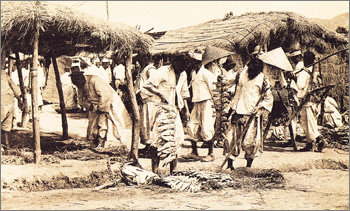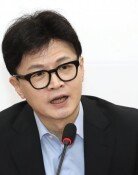The Fall of the Joseon Dynasty Began with Its Economy
The Fall of the Joseon Dynasty Began with Its Economy
Posted September. 18, 2004 08:03,

Viewing Late Joseon through the Lens of Quantitative History
Edited by Lee Young-hoon
409 pp. 20,000 won.
Published by Seoul National University Press
Korean historians, who advocate a nationalistic positivism, are under siege from all directions. Scholars of Western history have declared an all-out war to dismantle national history, rallying around the slogan, Nationalism is a fiction. Scholars of Chinese literatures and social historians are digging trenches of micro-history, violently shaking the foundations of macro-history and its grand statements on politics and ideology. Economic historians are putting on their own pressure with their advocacy of quantitative history, a more strenuous version of the positivistic methodology that academic historians had once used to invalidate the claims of non-establishment historians.
Viewing Late Joseon through the Lens of Quantitative History is a missile launched at the heart of nationalist historians by the proponents of economic history. Korean nationalist historians have been asserting that the seeds of capitalism had begun to sprout as early as the late Joseon Dynasty, in an attempt to refute Japans colonialist theory that Joseon society had long been mired in stasis. In opposition to the nationalist historians claims, scholars at the Naksungdae Institute of Economic Research (NIER), founded in 1987 by then-SNU professor Ahn Byeong-jik and Professor Lee Dae-geun of Sungkyunkwan University, argued that Koreas modernization properly began during the Japanese colonial era.
Viewing Late Joseon is the first concrete result of the new positivistic research undertaken by Professor Lee Young-hoon of SNU and his fellow academics, who make up the second generation of scholars at NIER. Over the past three years since August 2002, these economic historians have been working on a study of Koreas long-term economic statistics, with the sponsorship of the Korea Research Foundation. This book brings together nine papers from their first year of research, which compiles and analyzes statistics regarding Koreas population, wages, land value, prices, interest rates, and economic growth rates from 1650 to 1910.
The genealogical records of upper-class (yangban) families, accounts of rice costs and interest rates, wages as set down in various record books, changes in land value as indicated in clan and local registers, etc. all contribute to the statistics that inform this collection. The papers conclude that the late Joseon economy enjoyed a period of stability or development in the 18th century, then fell into crisis in the succeeding century.
Population levels, formerly on a steady climb, began to fall with the increase in mortality rate. Prices, including the cost of rice, peaked while actual wages dropped. Koreas intermediate trade between China and Japan, which was the bulwark of our economic growth during the 18th century, declined and the amount of silver retained by the central government fell from one million nyang in 1742 to merely 430,000 nyang in 1782. Cutting lumber from coastal areas was prohibited, resulting in serious deforestation in the inland regions. This, in turn, led to a reduction in rice productivity per land unit and the decrease of agricultural markets, and resulted in the dissolution of the governments famine relief system (known as hwan-gok). All of this indicates that the fall of the Joseon Dynasty derived from an internal exhaustion, rather than from the influence of powerful external forces.
The collection also brings attention to the anti-capitalistic character of Joseons economy. Until the end of the 19th century, commodities like horses, rice, and cloth were used as currency, and interest rates per year were as high as 30~40 percent, which would have posed a serious challenge to the accumulation of capital. In addition, wages for poor, unskilled workers (called mogun) were higher than those earned by skilled workers (or jangin), and the governments hwan-gok system operated on a scale of 50 million bushels a year until the mid-18th century. Such evidence suggests that a non-market-based moral economy persisted strongly throughout most of the Joseon era.
But, of course, numbers dont tell the entire story. The depletion of 19th century Joseon economy is already evidenced by the numerous riots and uprisings that plagued society at the time. Moreover, economic crisis does not always signify the depletion of the internal potential to overcome it. Even Britain experienced extreme wage drops and the devastation of its agricultural economy during the first stages of industrialization. Japan also faced the challenges of falling agricultural productivity and severe inflation around the time it opened its doors to Western trade. In this context, we may well expect a counter-response from other quarters of Korean historical scholarship.
Chae-Hyun Kwon confetti@donga.com







